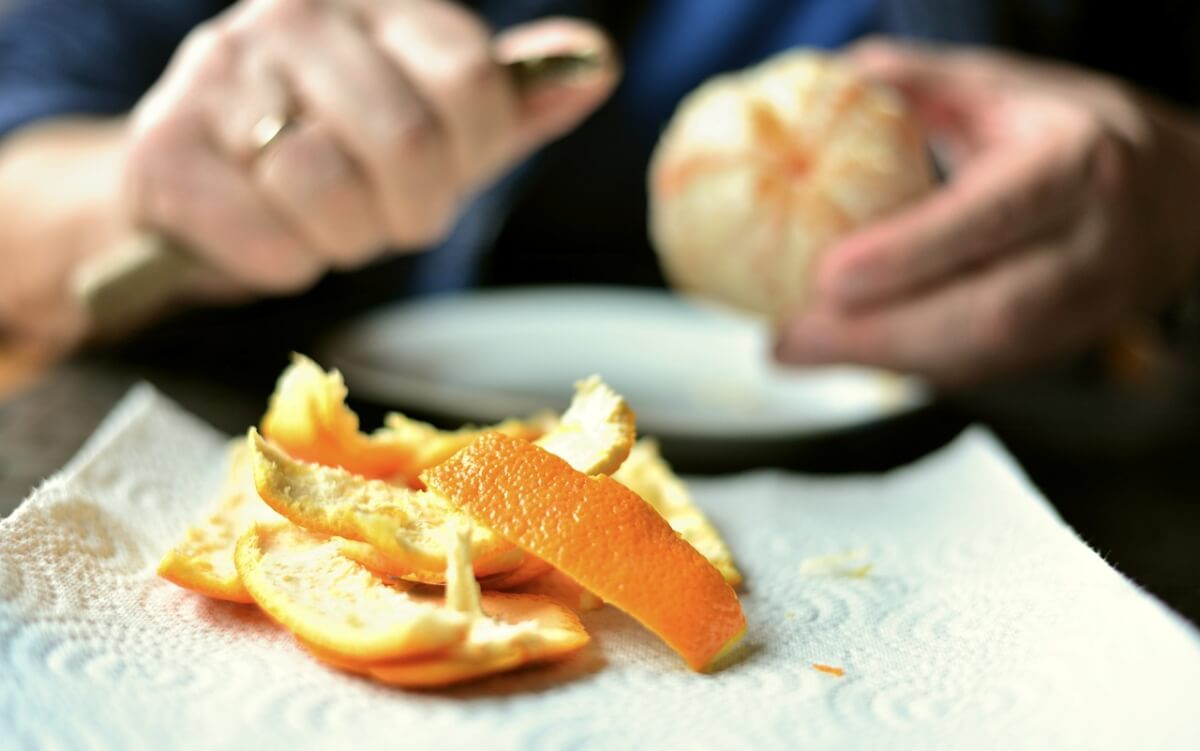
Photo by congerdesign from Pixabay
GAINESVILLE, Fla. — The key to a healthier heart may be sitting in your kitchen's trash bin. Groundbreaking research published in the Journal of Agricultural and Food Chemistry suggests that those orange peels you've been tossing out might contain a substance that protects your heart.
Heart disease is no joke. It's the number one killer in the United States, claiming lives across all demographics. Here's where things get interesting: scientists discovered that some of our gut bacteria, those tiny organisms living in our digestive system, might be secretly plotting against our heart health.
These sneaky bacteria have a taste for certain nutrients in our food. As they munch away during digestion, they produce a substance called trimethylamine N-oxide, or TMAO for short. Now, TMAO isn't just some random chemical. Researchers at the Cleveland Clinic have found that higher levels of TMAO can predict your risk of future heart problems. It's like having a crystal ball for your cardiovascular health, but not the kind you want.
Yu Wang and her team at the University of Florida are now peeling back the layers of this problem, quite literally. With a $500,000 grant from the U.S. Department of Agriculture, they turned their attention to orange peels. Not just because they had plenty sitting around in the kitchen but because these peels are rich in phytochemicals. These are natural compounds in plants that can benefit our health.

The team suspected these orange peel extracts might help reduce the production of TMAO and its precursor, trimethylamine (TMA). To test this, they extracted two types of compounds from the peels: polar and non-polar fractions. If that sounds like high school chemistry all over again, don't worry. Wang explains it beautifully with a simple salad dressing analogy.
“If you imagine your salad dressing, anything in the water or vinegar part are the polar fraction; anything in the oil away from water is the non-polar fraction,” Wang says in a media release. “The solvents we used were not exactly like water and oil, but they possess similar polarity.”
So, think of polar as water-loving and non-polar as oil-loving. They used special solvents to pull out these different fractions from the orange peels. The results? Pretty amazing. The non-polar fraction from the orange peel effectively puts the brakes on those harmful chemicals.
That's not all that happened. In the polar fraction, they found a compound called feruloylputrescine. This substance significantly inhibits the enzyme responsible for producing TMA, which later becomes TMAO.
“This is a novel finding that highlights the previously unrecognized health potential of feruloylputrescine in reducing the risk of cardiovascular disease,” Wang explains.
In simpler terms, they've discovered a hidden superhero in orange peels that could be a game-changer for heart health.
Now, here's where it gets even better. When you sip your morning orange juice, do you ever wonder what happens to the peel? In the U.S., juice production generates a staggering five million tons of orange peels each year. Florida alone, where nearly 95% of oranges go into juice, produces mountains of peels. Some feed cattle, but a lot ends up as waste.
The FDA considers natural orange peel extracts safe for human consumption. Wang sees this as a golden opportunity.
“These findings suggest that orange peels, often discarded as waste in the citrus industry, can be repurposed into valuable health-promoting ingredients, such as diet supplements or food ingredients,” the study author says. “Our research paves the way for developing functional foods enriched with these bioactive compounds, providing new therapeutic strategies for heart health.”
Imagine a future where your breakfast cereal or your favorite snack bar is fortified with orange peel extract. Or maybe you'll pop an orange peel supplement with your morning coffee. Either way, scientists believe they are one step closer to turning your trash into a heart-healthy treasure.
EdNews Editor Chris Melore contributed to this report.










